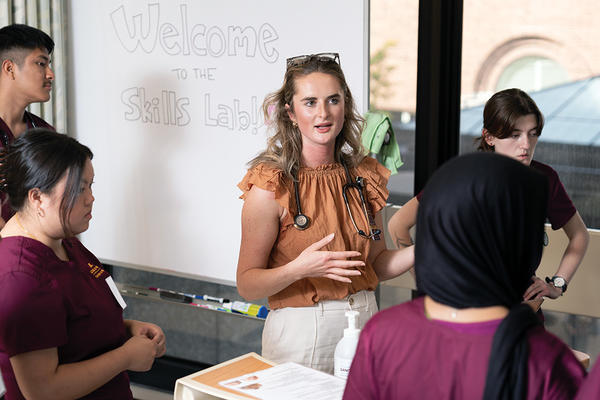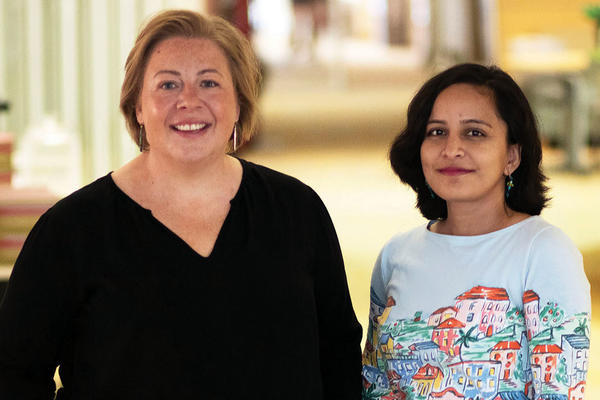DNP students create video series to help parents prepare for having a baby
June 18, 2020

As COVID-19 started its spread in Minnesota, nurse-midwife leaders from across the state started meeting weekly over Zoom to discuss how care was changing. With the COVID-19 pandemic limiting clinical visits, expecting patients experienced even less time with their providers during wellness checks and their partners weren’t allowed to attend with them. In addition, in-person prenatal classes were suspended.
The new protocols exacerbated an existing challenge to provide expecting parents with the education to prepare for a major life milestone. “It’s an ongoing issue to flatten inequities around accessibility to education that patients and families need to prepare for having a baby,” said Ann Forster Page, DNP, APRN, CNM, FACNM, nurse-midwife service director, University of Minnesota Physicians and adjunct clinical assistant professor at the School of Nursing who served as the community partner for the project.
To address the need, students in the Doctor of Nursing Practice (DNP) program created a comprehensive library of educational videos to prepare expecting parents for pregnancy, labor, postpartum and newborn care. The series, Having A Baby: Prenatal and Newborn Care Education, includes 60 videos of educational material that is free to access and was designed to be short and easy to understand.
Four DNP students, Shannon Weas, Bonnie Perrine, Naomi Lara and Mandy Hoffman, wrote the scripts for the videos and enlisted the help of DNP colleagues in nurse-midwifery, pediatric nurse practitioner and women’s health nurse practitioner specialties to record the videos. Filmmaker Deacon Warner edited the videos, which are available on the School of Nursing website.
“COVID-19 highlighted inequities that already existed in terms of accessing prenatal education and a timely need for a free, easily accessible option for prenatal education became apparent,” said Weas, BSN, RN, PHN, a DNP nurse-midwifery student who will graduate in 2021. “A large reason I went into midwifery is the midwifery philosophy of whole-person care, which includes providing equitable care to all. Every person deserves the right to access health care and our current system makes this difficult. This project is a small step in increasing access to, and fighting inequities in, health care.”
The goal of the videos is to help expecting parents feel more prepared for pregnancy, birth and newborn care and to think through their values and options in pregnancy care. Topics include everything from breastfeeding to baby care, normal physiologic labor, how to support labor and vaginal birth after C-section preparation.
“We were really purposeful in breaking up the topics, so that they are shorter and easy to watch in little spurts,” said Forster Page. “Patients can jump around as they need and supplement their knowledge with the 3-5 minute videos. The language is intentionally taking the medicalized approach out of it, so it’s much more conversational.”
The DNP students are working to get the videos captioned for those who are hearing impaired and translated to Spanish and Somali. They have applied for a grant to be able to expand language access to other languages widely spoken in the Twin Cities area as well.
“There is just such a vast need for more accessible patient education,” said Lara, BSN, RN, adding that her own experience with a lack of prenatal and woman’s health education was one of the reasons why she chose to become a midwife. “I hope that providers are able to use this resource to enhance and reinforce the education they are giving to patients, and perhaps even free up some time to spend answering more patient questions. I also hope that the patients who see our videos will feel more empowered in their pregnancy, birth and parenting.”
The students’ work on the series was part of the DNP program requirement to develop and implement a system-level change.
“All four of these students demonstrated an ability to really consider what patients and families need, how to funnel their knowledge into easily understandable education, and how to lead a multidisciplinary team to create a huge impact in care delivery,” said Forster Page. “These are the skills and qualities we need in our future providers.”


